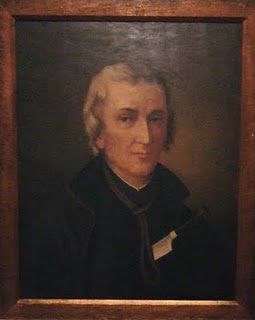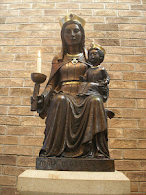The month is quickly slipping into the past and I should not allow that to happen without speaking of its significance in the Church’s year. This month, October, is designated by the Church as a Marian month, the month of the Holy Rosary. The Rosary’s roots can be found in several early Christian traditions which share similar formats to the rosary with repetitive prayers. The earliest form of the Rosary developed when Pope Gregory the Great (590-604) popularized an earlier version of the Hail Mary by having it prayed on the fourth Sunday of Advent. Many people then began praying the Hail Mary in a repetitive fashion using a string of beads to keep track of the prayers.
Without doubt, the Hail Mary, also known as the Angelic Salutation, is the most well known and most beloved of Marian prayers. It took many years to come together as the prayer we know today. The earliest version simply added Mary’s name to the message of the Angel Gabriel to Mary: “Hail, full of grace, the Lord is with thee.” (Luke 1:28)
 |
The Angel Gabriel and Mary
|
Sometime around the year 1050, the words of Elizabeth’s greeting to her cousin Mary, “Blessed art thou among women, and blessed is the fruit of thy womb” (Luke 1:42) were added.
The Holy name of “Jesus” was added to the Angelic Salutation by Pope Urban IV in 1261.
 |
Pope Urban IV
|
In 1555, St Peter Canisius published the Hail Mary in his Catechism with the initial part of the final petition: “Holy Mary, Mother of God, pray for us sinners”.
In 1566, the Catechism of the Council of Trent included the final petition, concluding with the words “now and at the hour of our death. Amen.”
 |
St Peter Canisius
|
The Hail Mary that we pray today was given official approval in 1568. The term “Rosary” was finally given in 1597.
So, today, we have that beautiful prayer: “Hail Mary, full of grace, the Lord is with thee. Blessed art thou among women, and blessed is the fruit of thy womb, Jesus. Holy Mary, Mother of God, pray for us sinners, now and at the hour of our death. Amen.”
 |
| A house/shop in France |
For more than 300 years the form of the Rosary remained the same. In 1917, Our Lady appeared to three shepherd children in Fatima, Portugal. Mary asked them to return to the spot on the 13 of each month for the next six months. During these apparitions, Mary told the children to pray the Rosary every day for world peace. She also instructed them to finish each decade with the short prayer: “Oh my Jesus, forgive us our sins, save us from the fires of hell. Lead all souls to heaven, especially those who have most need of thy mercy.” This is known as the Fatima prayer and, in accordance with Our Blessed Lady’s request, many Catholics incorporate the prayer into the Rosary.
 |
Our Lady of Fatima
|
The Rosary has an interesting history and it is worthwhile browsing the plentiful information available in books and on the internet. Oh, and think seriously about Mary’s request to pray the rosary every day.
Queen of Martyrs, pray for us.
Queen of the most holy Rosary, pray for us.

































.JPG)

.JPG)



.JPG)

